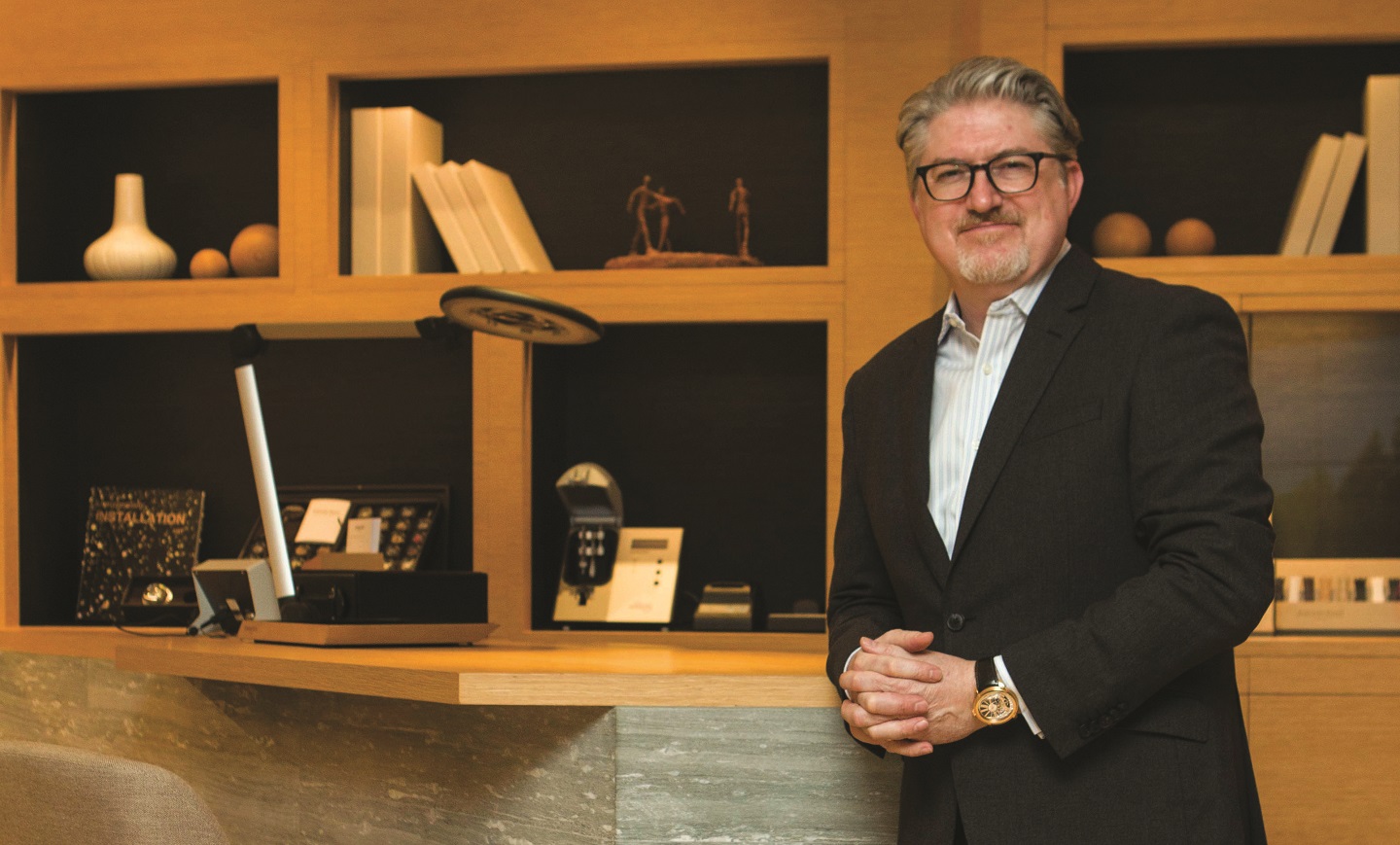
Upon taking the Singapore-based position of CEO, Southeast Asia for Audemars Piguet earlier last year, Jonathan King landed himself in truly familiar territory — not only has he been based in the Lion City before, representing jeweller Van Cleef & Arpels, but comes to his role fresh from a stint with the Le Brassus watchmaker in Tokyo, Japan. The transition wasn’t at all difficult for him to make, and he has dived right into his new role located in what is increasingly becoming one of the most interesting and rapidly growing luxury markets in the world.
In the time the bearded Englishman was based in Japan, Audemars Piguet continued its growth in the region — there are now two standalone boutiques in Singapore and one in Bangkok, as well as a stunning space in Starhill Gallery, Kuala Lumpur, where I meet King on a rainy Friday afternoon. I squeeze in a quick tour of the shop ahead of his arrival and I am especially enamoured with the Royal Oak Quartz in pink gold, which features brilliant-cut diamonds that break over the dial, bezel and bracelet in an asymmetrical wave, resembling the falling snow in Le Brassus, Switzerland, the home of Audemars Piguet.
“When I left Singapore five years ago, Marina Bay Sands had just opened. I call it the advent of the new casino drive and a completely new level of entertainment. Since then, MBS has matured. Apart from that, the region is seeing more tourists, more activities — Southeast Asia continues to grow and develop,” King says, a timepiece from the Millenary collection peeking out from under his shirtsleeve.
“The market looks to be full of opportunities — I am an optimist and to me, the glass is always full. Despite political change and even monetary and fiscal changes across the region, there has never been a better time than the present. Economies are growing and there is relative stability in the region, so I think things are pretty good. Globally, there is enormous volatility — the US is up and China seems on the road to luxury recovery — so I think I came back to a market that is in very good shape.”
In his time spent managing two unique — albeit related — regions, King has noticed that despite there being subtle differences between individual buyer behaviours, the demand for Audemars Piguet watches remains essentially similar.
“As you go from country to country, or city to city, you see local preferences — the colour of the gold, the colour of the dial. Sometimes there is a preference for more conservative styles, sometimes it is about more bold styling. But generally speaking, we are very fortunate to have strong demand for the Royal Oak, Royal Oak Offshore and the Millenary collections,” he says.

This steady demand makes it easier for the watchmaker to cope — Audemars Piguet is a small, family-owned watchmaker that can produce no more than 40,000 watches a year. Faced with surging demand each passing year, the company has responded by decreasing its distribution size and maintaining production to ensure that each watch is made with the attention to detail it is famous for.
In fact, as the manufacture continues to grow, the focus is on ensuring the customer experience remains the best it can achieve — a fact I am reminded of as I look around the Starhill Gallery boutique. Designed to be Audemars Piguet’s home away from home, the airy, spacious shop is divided into two spaces — The Manufacture includes detailed product displays and a watchmaker’s corner, while The House incorporates a full-service bar and lounge that invites clients to relax with an espresso or a flute of champagne, offering a welcoming and personal customer service experience.
“It is our job to make sure that we always put forward the best possible information about the brand and provide customers with the best updates on our new movements and designs,” King says. “We keep our eye on two areas — one is delighting our customers and ensuring our boutiques and partners provide the best possible experience and the other is that after-sales service is kept at the highest level so we are a benchmark for the industry.”
Lessons he has learnt, no doubt, from his stints in the watch and jewellery industries in Asia as well as other roles he has had as far afield as the US, the Caribbean and Kenya, where he began his career in hospitality.
“What joins watches and jewellery is the artisanship,” he observes, rubbing his chin. “These are men and women — often for generations — who are as at home with their artistic side as they are with their engineering and scientific side. Both of these elements appeal to me and it is for that reason I have always been attracted to the industry.”


